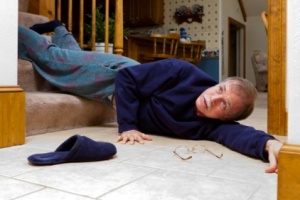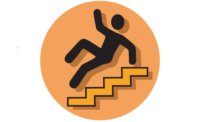 Six out of every 10 falls happen at home, where we spend much of our time and tend to move around without thinking about our safety.
Six out of every 10 falls happen at home, where we spend much of our time and tend to move around without thinking about our safety.
The U.S. Department of Health & Human Services’ National Institutes of Health (NIH) says many of these falls can be prevented by making simple changes.
Through its Go4Life Everyday Fitness Ideas, the NIH has issued these tips to help you reduce your risk of falling:
- Remove anything that could cause you to trip or slip while walking. Clutter, small furniture, pet bowls, electrical or phone cords, and throw rugs can cause falls.
- Arrange furniture so you have plenty of room to walk freely. Also, remove items from stairs and hallways.
- Secure carpets to the floor and stairs. Use non-slip rugs, or attach rugs to the floor with double-sided tape.
- Avoid wet floors, and clean up spills right away. Use only non-skid wax on your waxed floors.
- Use non-slip items in the bathroom. Put non-slip strips or a rubber mat on the floor of your bathtub or shower.
- Make sure you have enough lighting in each room, on stairs, at entrances, and on outdoor walkways. Use light bulbs that have the highest wattage recommended for the fixture.
- Use the handrails on your stairs. When you carry something up or down the stairs, hold the item in one hand and use the handrail with the other.
- Place a lamp next to your bed along with night lights in the bathroom, hallways, and kitchen. Keep a flashlight by your bed in case the power goes out and you need to get up at night.
- Stay physically active. Lower-body strength and balance exercises can help prevent falls.
For more information, read the Falls and Fractures AgePage. www.nia.nih.gov/health



